Coffee beans from Sika, Kenya: a description of the characteristics and flavor of Kenyan coffee from the African continent
Kenyan sika is one of the second largest coffee producing countries in Africa. Compared with other coffee producing countries in Kenya, it has some unique characteristics besides obvious tomato tonality.
Raw beans were treated mainly by washing, graded by particle size, and evaluated by cup test. The highest grade coffee beans are AA (large beans retained on a 7.2 mm screen), A (next largest beans retained on a 6.8 mm screen), B (medium beans retained on a 6.2 mm screen), C (all small beans smaller than B), PB (oval beans), and TT and T beans that are too light and too small. Class A and B beans are mixed together for export and are called Class AB. The Kenyan authorities (CBK) have very high requirements for coffee beans, consistent packaging, good quality and excellent texture, so coffee lovers will never forget to enjoy a cup of Kenyan coffee.
KIAMBU
Most of the land in this area is occupied by large landowners. But as urbanization expanded, a large number of large landowners found it more profitable to sell their land for urban development than to be a landowner. Coffee beans in this area are named after the place where they are produced, such as Thinka, Ruiru, Limuru, etc. Many large landowners also run multinational enterprises, so farming focuses on higher yields rather than higher quality. However, there are still a small number of small farmers in this area.
main producing areas
Fine coffee producing areas mainly come from the following districts: Nyeri Neri, Kirinyaga Kirinyaga, Murang a Muranga.
In addition, Embu Embu, Laikipia Laikipia are also more common.
As can be seen from the topographic map, well-known production areas are located around Mount Kenya.
name of raw bean
The name Kenyan beans can be interpreted in the following ways:
Country name + County name +(Cooperative name +) Factory name + Grade + Others
For example, Humen Coffee 2015 Kenya Nyeri Gatomboya AA GP (click link, green bean resume), i.e., the green beans are AA grade green beans from Kato Boya processing plant in Neri County, Kenya, packaged in special grain bags. (See blog post, common raw bean label noun interpretation)
Kenya's coffee is mainly named after coffee processing plants, and it is difficult to trace it back to specific producers.
Thanks to Kenya's famous coffee auction system, coffee quality can be maintained at a consistently high level.
Factory classification
Coffee growers in Kenya are mostly smallholder farmers. Coffee farmers are mainly responsible for harvesting and delivering the harvested coffee to the processing plant.
Processing plants are generally divided into two categories: wet mills, wet mills, and dry mills.
Wet processing plant is responsible for peeling and drying fresh fruit, dried beans with shell, sent to dry processing plant.
Dry processing plant is responsible for the completion of export required shelling, classification and other follow-up operations.
ps:
※ For more information about Kenyan coffee, please refer to the blog post:
1. Kenya Coffee: Overview.
2. Kenya Coffee: Grading, Kenya AA
3. Kenya: Kirinyaga
4. Kenya: Muranga
5. Kenya: Nyeri
* Emblem of Kenya:
Kenya's national emblem, enacted in 1963, centers on a fusiform coat of arms in the same color as the national flag, with a golden lion on each side, one arm holding a spear and one arm holding the coat of arms. The white rooster with an axe in the center of the back is the emblem of the Kenya African National Union. According to local tradition, the rooster symbolizes a new life. The two lions symbolize national sovereignty and dignity, as well as Kenya's links with Britain. Double Lion Foot is the second largest mountain in Africa-Kenya volcano. It treads fertile land, full of coffee, citrus, sisal tea, corn and pineapple. It is full of fruits and fragrance. This is the epitome of Kenya people's peaceful life and national prosperity. The brown ribbon below the national emblem has the Swahili word "coexistence" written on it, expressing the Kenyan people's desire for peace, fraternity, freedom and equality.
Kenya AA, round beans, thick flesh, good heat transmission, high delicacy, French baking, thick sweet taste, with mellow, better swelling, aroma and sweetness are top grade.
The best Kenyan coffee grade is Bean Berry Coffee (PB), followed by AA++, AA+, AA, AB, etc., in that order. Fine coffee is shiny, delicious and slightly aromatic. The auction is also organized to meet the needs of the distributor.

Kenya
The British landed coffee in Africa in 1878, and coffee plantations were established in Kenya in the 19th century, when Ethiopian coffee drinks were imported to Kenya via southern Yemen. But it wasn't until the early 1900s that bourbon coffee trees were made by St. Austin Mission (St. Austin Mission).
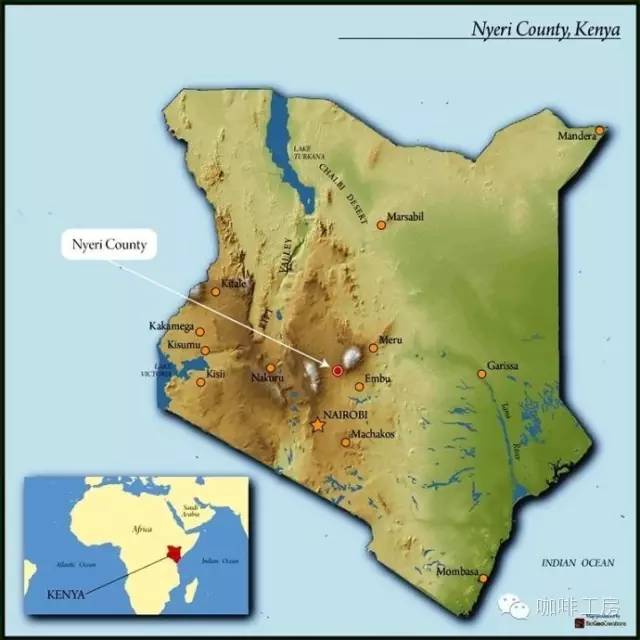
Kenya Coffee Origin:
Kenya coffee is mostly grown at altitudes of 1500- 2100 meters and harvested twice a year. Kenya coffee is grown by small farmers. Kenyan coffee is grown near Mount Kenya in central Kenya and is sometimes named after the capital Nairobi to ensure its quality. Kenya AA (Kenya AA) is produced on the 17,000-foot slopes of Mount Kenya near Nairobi, Kenya's capital. Kenya AA is the largest coffee bean in the country, followed by A and B. Its unique bitterness and wine taste, the most praised by people. Kenya, located below the equator in East Africa, grows high-quality Arabica coffee beans. The beans are medium-large in size, very rich and flavorful, and moderately acidic.
Characteristics of Kenyan Coffee:
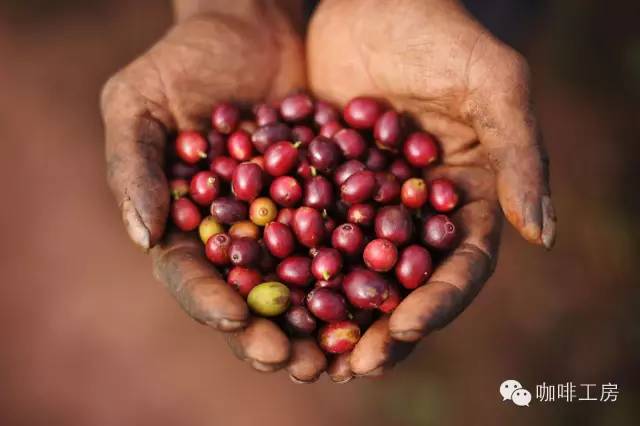
Kenyan coffee is considered by coffee professionals to be one of their favorite products, with a wonderful, satisfying aroma, balanced acidity, well-proportioned particles and excellent fruit flavor.
Kenyan coffee grades are divided into seven grades according to the size of the coffee beans, and six grades according to the taste from top to bottom. Kenya's best coffee grade is Bean Berry Coffee (PB), followed by AA++, AA+, AA, AB, etc., in that order. Fine coffee is shiny, delicious and slightly aromatic. "Kenya AA" is particularly well received in terms of taste.
Kenya coffee has a slightly sour, dense aroma, small green to grayish green particles. Kenyan coffee beans are washed Arabica beans, known as (Kenyan Arabica), especially in the UK, Kenyan coffee has surpassed Costa Rica coffee to become one of the most popular coffee.
Flavor: Aromatic, rich, fruity, rich and perfect on the palate
Front Street Coffee Roasting Advice:
Kenya is dominated by SL28/SL34, which is harder and higher density at high altitude. Kenya beans have high moisture content, baking needs to be fully dehydrated, early baking with medium heat, 20% into the bean damper, browning point plus heat to enhance aroma, damper open to 50%, one explosion damper 80%, fire according to ROR conditions, light baking degree to retain floral aroma, if you want to taste more mellow and sweet, you can bake to moderate baking.
Kenya Coffee Market:
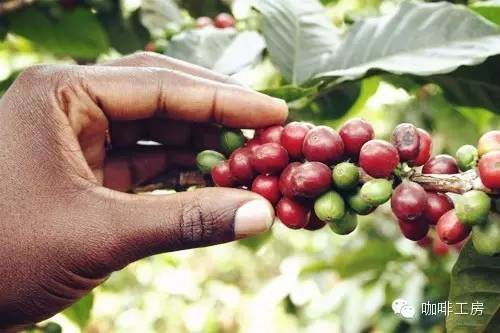
The Kenyan government takes the coffee industry extremely seriously, and it is illegal to cut down or ring coffee trees here. Kenya's coffee buyers are world-class buyers of premium coffee, and no country grows, produces and sells coffee as consistently as Kenya. All coffee beans are first acquired by the Coffee Board of Kenya (CBK), where they are appraised, graded and then sold at weekly auctions, where they are no longer graded. The Kenya Coffee Board acts only as an agent, collecting coffee samples and distributing them to buyers so that they can determine price and quality. Nairobi auctions are held for private exporters, and the Kenya Coffee Board pays growers below-market prices.
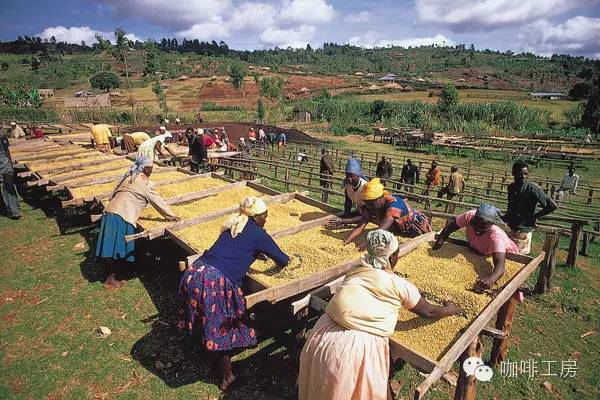
After harvesting coffee from Kenya coffee plantations, fresh coffee beans are sent to cooperative washing stations, where the washed and dried coffee is sent to cooperatives in the state of "parchment coffee beans"(i.e. coffee beans covered with endocarp)("parchment coffee beans" are the final state of coffee beans before peeling). All the coffee is collected together and the grower charges an average price based on its actual quality. This method of buying and selling generally works well and is fair to both growers and consumers.
The auction is also organized to meet the needs of the distributor. These auctions usually sell small quantities (3-6 tons each), with samples bearing the grower's logo for buyers to appreciate. After auction, exporters pack according to different flavors, different qualities and quantities required by blenders. This provides a great deal of flexibility for the deployer. Quality-conscious germans and nordics are long-term buyers of kenyan coffee. Some buyers, especially Japanese ones, have complained about Kenya's coffee system. Either way, kenya's detailed rules and procedures are a model for all coffee-producing countries.
Aromatic, rich, fruity coffee with a rich and perfect taste. Kenya coffee has a wonderful fruity flavor, with a blackberry and grapefruit flavor, and is a favorite of many coffee lovers. This coffee has an excellent medium purity, crisp and refreshing taste. Fresh flavor and best for iced coffee in summer.
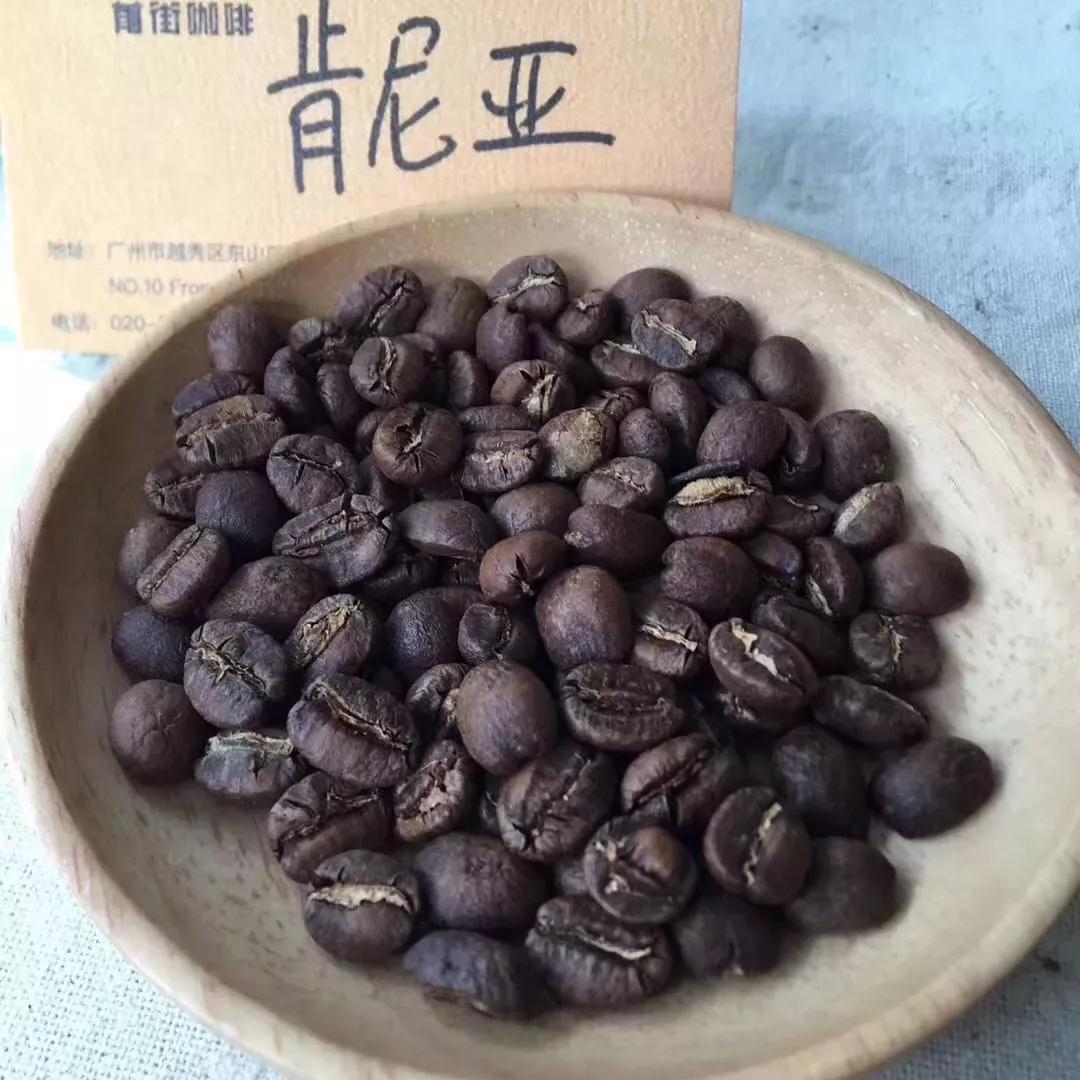
When tasting this coffee, if it is accompanied by fruit with acidity such as grapefruit, it will definitely give me the best coffee experience. "Not so much coffee, but a bit fruit tea" is the common feeling many people have for this light roasted Kenyan coffee. Every year, different weather and rainfall bring a variety of distinct and unique personalities. Take AAPlus grade "KenyaAA+Samburu" as an example. Samburu of 2001 has strong dark plum fragrance, low acidity and strong taste. Samburu newly harvested in winter of 2002 presents completely different flavor. Mulberry berry and green plum, accompanied by a little spicy flavor. After drinking, it has sweet fragrance of green tea. The acidity is slightly higher than that of the previous year, and the taste is still strong. The usual Kenyan flavors are not intense, but have fruity bright flavors, some with spices and some with red wine aromas. Kenya coffee is so full of expectations and surprises for coffee fans!
Front Street Coffee Kenya AA Brewing Advice
Recommended cooking method: hand brewing
Abrasion: 3.5 (Fuji R440)
Water temperature: 91°C
V60 filter cup, 15 grams of powder, water temperature 95 degrees, grinding 3.5, water powder ratio close to 1:15
30g water steams for 30s
Staging: water injection to 110ml, water cut off slowly to 225ml,
30-110-85.
Specific hand-brewed [Kenya coffee]: 15g powder, medium fine grinding (small Fuji ghost tooth knife 3.5 grinding), v60 filter cup, 90-91 degrees water temperature, the first water injection 30g water volume, 30s steams, inject to 110g water volume cut off water, wait for the powder bed water volume to drop to half and then inject water, slowly inject water until 225g water volume, tail section do not, water powder ratio 1:15, extraction time 2:12.

Other suggestions for trickle-filtration extraction:
Normal pressure, recommended abrasiveness of 3.5-4/water temperature 90°C
Aile pressure, recommended 2.5 grind, water temperature 88°C
Siphon: 4 degrees of grinding, water temperature 91°C

Kenya washing TOPAA tin card producing area Azalia processing factory order baking fine beans POS EXPRESS
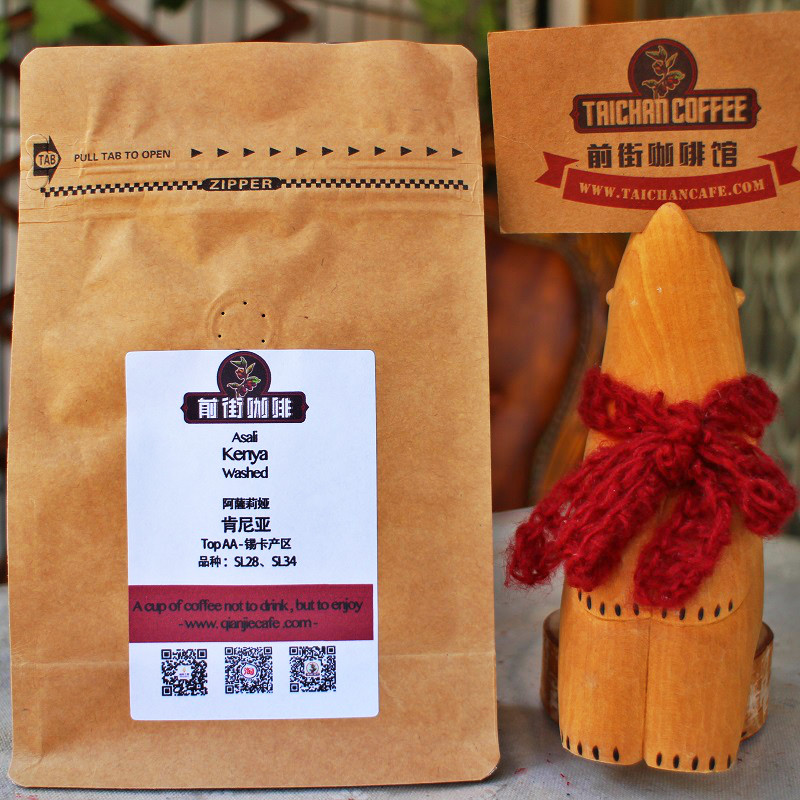
Purchase Link: item.taobao.com/item.htm? spm=a1z10.5-c-s.w4002-15673140460.24.56c226dbJsgzsO&id=536197854795
For more professional coffee exchanges, please scan the code and follow WeChat: qiannjie
Important Notice :
前街咖啡 FrontStreet Coffee has moved to new addredd:
FrontStreet Coffee Address: 315,Donghua East Road,GuangZhou
Tel:020 38364473
- Prev

What are the coffee producing areas in Honduras? Introduction to the Flavor characteristics of Honduras Coffee
Professional coffee knowledge exchange more coffee bean information please follow the coffee workshop (Wechat official account cafe_style) Honduras coffee industry developed very early, more than a decade ago was just the positioning of non-characteristic commercial formula beans, dumping the market at a large number of low prices
- Next
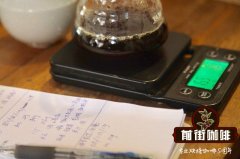
What's so special about Antigua Coffee in Guatemala? Guatemala Coffee Story
Professional coffee knowledge exchange more coffee bean information please follow Coffee Workshop (Wechat official account cafe_style) La Flor del Cafe literally means Coffee Flower, comes from the high altitude area in the heart of the volcanic region of Antigua, especially La Flor del Cafe is provided by the famous La Minita estate in Costa Rica with the highest standard of planting and location in the industry.
Related
- Detailed explanation of Jadeite planting Land in Panamanian Jadeite Manor introduction to the grading system of Jadeite competitive bidding, Red bid, Green bid and Rose Summer
- Story of Coffee planting in Brenka region of Costa Rica Stonehenge Manor anaerobic heavy honey treatment of flavor mouth
- What's on the barrel of Blue Mountain Coffee beans?
- Can American coffee also pull flowers? How to use hot American style to pull out a good-looking pattern?
- Can you make a cold extract with coffee beans? What is the right proportion for cold-extracted coffee formula?
- Indonesian PWN Gold Mandrine Coffee Origin Features Flavor How to Chong? Mandolin coffee is American.
- A brief introduction to the flavor characteristics of Brazilian yellow bourbon coffee beans
- What is the effect of different water quality on the flavor of cold-extracted coffee? What kind of water is best for brewing coffee?
- Why do you think of Rose Summer whenever you mention Panamanian coffee?
- Introduction to the characteristics of authentic blue mountain coffee bean producing areas? What is the CIB Coffee Authority in Jamaica?

